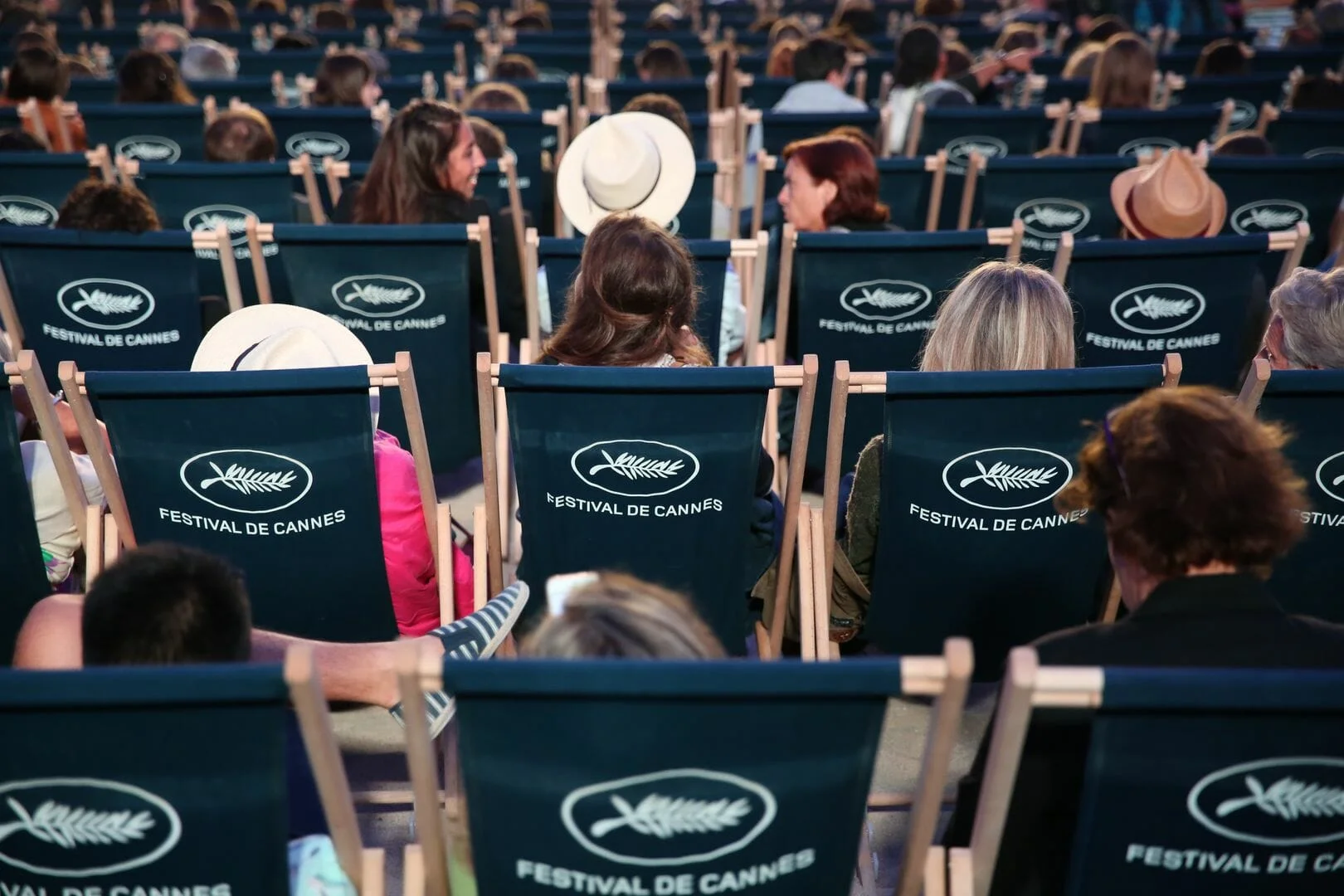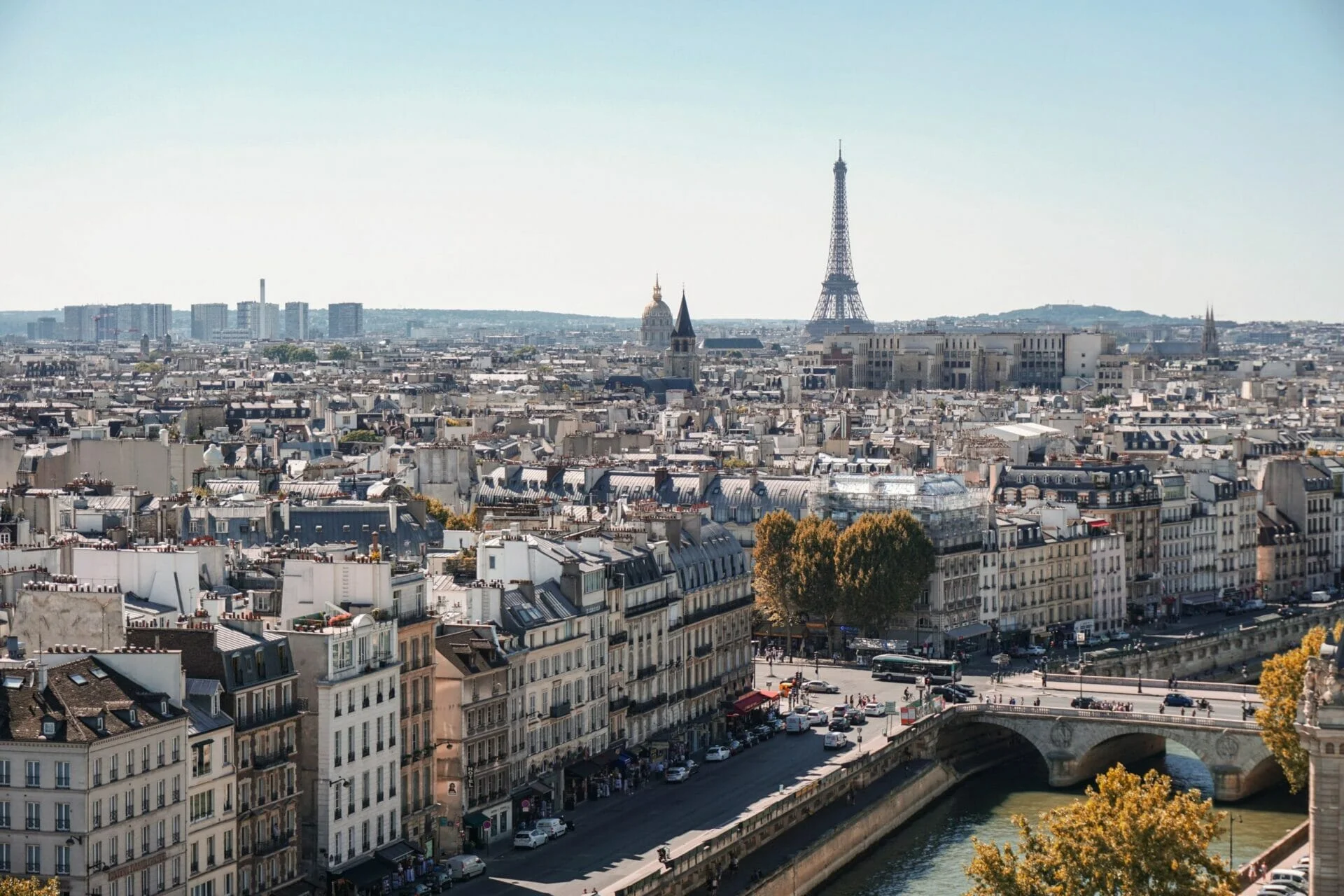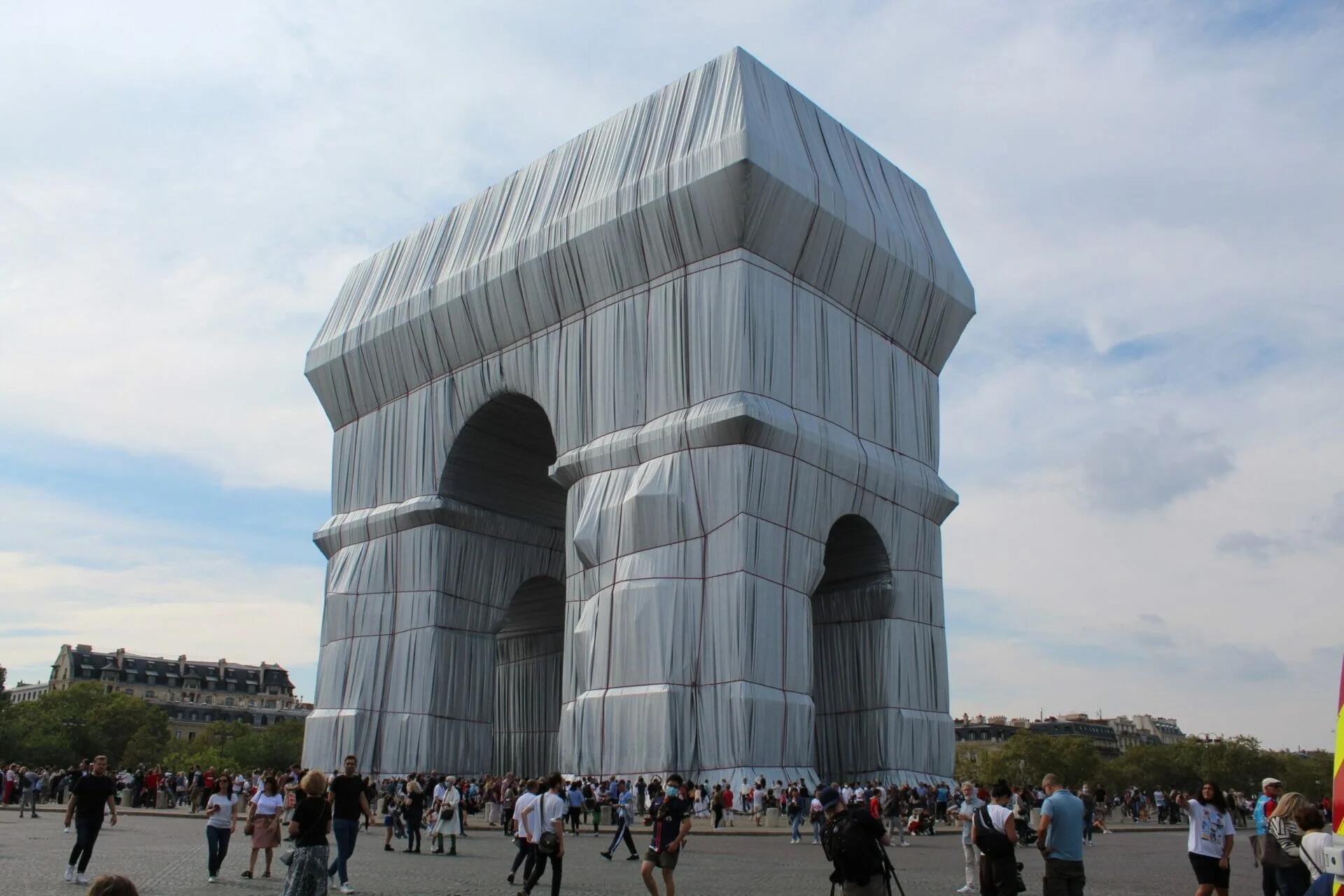
Arc de Triomphe Wrapped | The extraordinariness of the ordinary
Artist
Country
By
The Parisian landscape looked different from the 18th of September to October 3, 2021, as one of its most iconic monuments was missing: the Arc de Triomphe. In fact, when looking across Avenue Foche, one could notice the 19th-century neoclassic marble arch hidden under a thick layer of recyclable silver plastic. This artwork shows Paris’s citizens the extraordinariness of the ordinary.
This is the work of the Bulgarian-born artist Christo and his partner Jeanne Claude. Christo, who died in May 2020, expressed the desire that his and his companion’s projects continued even after their death. Thus, the Arc de Triomphe Wrapped can be considered as the two artists’ epitaph.
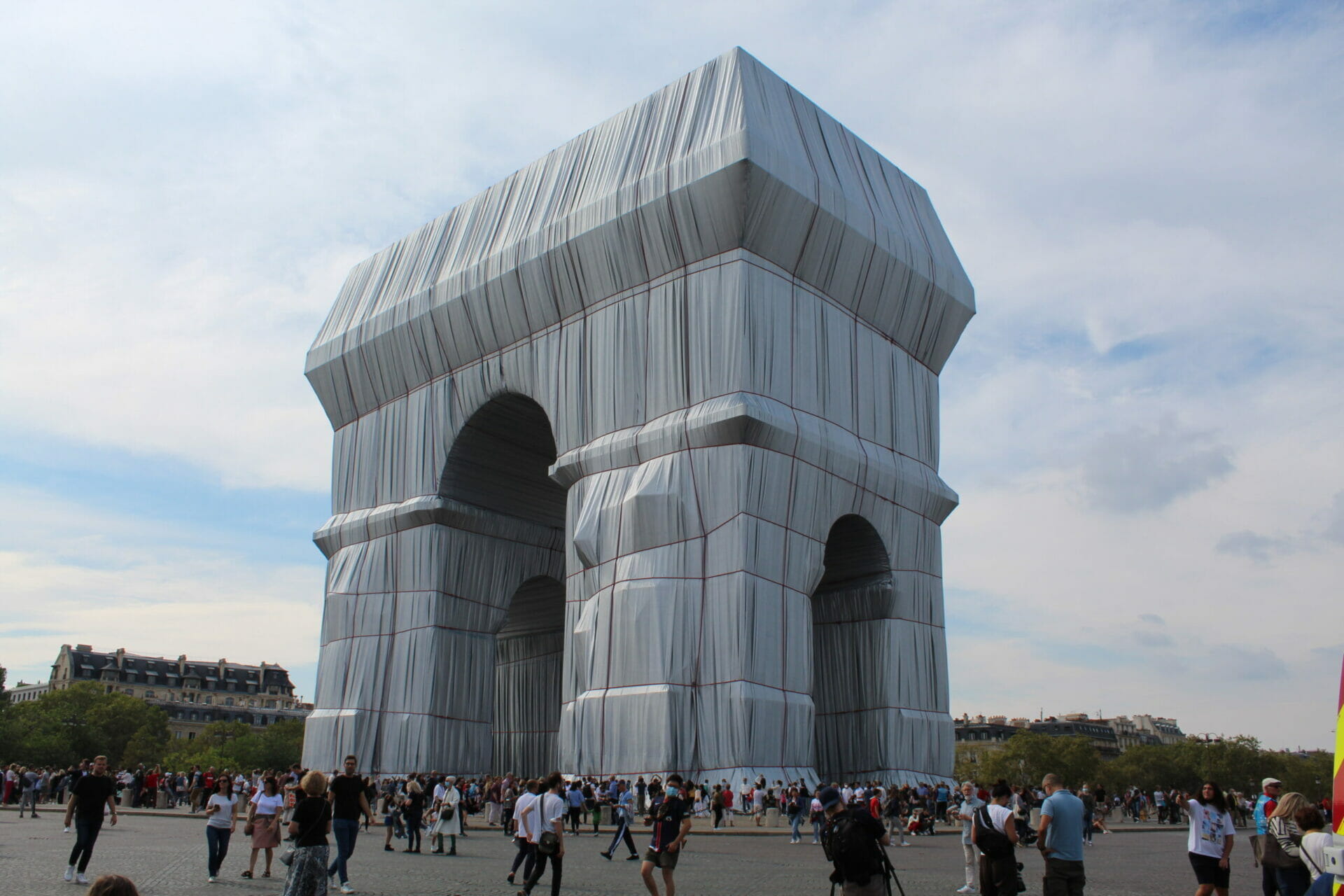
L’Arc de Triomphe, Wrapped by Christo and Jeanne-Claude (Paris – 09/19/21).
The Arc de Triomphe
Wanted by Napoleon in 1806 to commemorate his victory at Austerlitz, the Arc de Triomphe was not completed until 1836. By that time, the architect designated by Napoleon, Jean Chalgrin, had died and the project was passed over to Jean Nicholas Huyot.
Victor Hugo‘s body was publicly displayed here in 1885 and, since its inauguration, the monument has been an icon of french imperialistic power. Indeed, Chalgrin, when designing the monument, cleverly decided to mock the ancient Roman Arch of Titus.
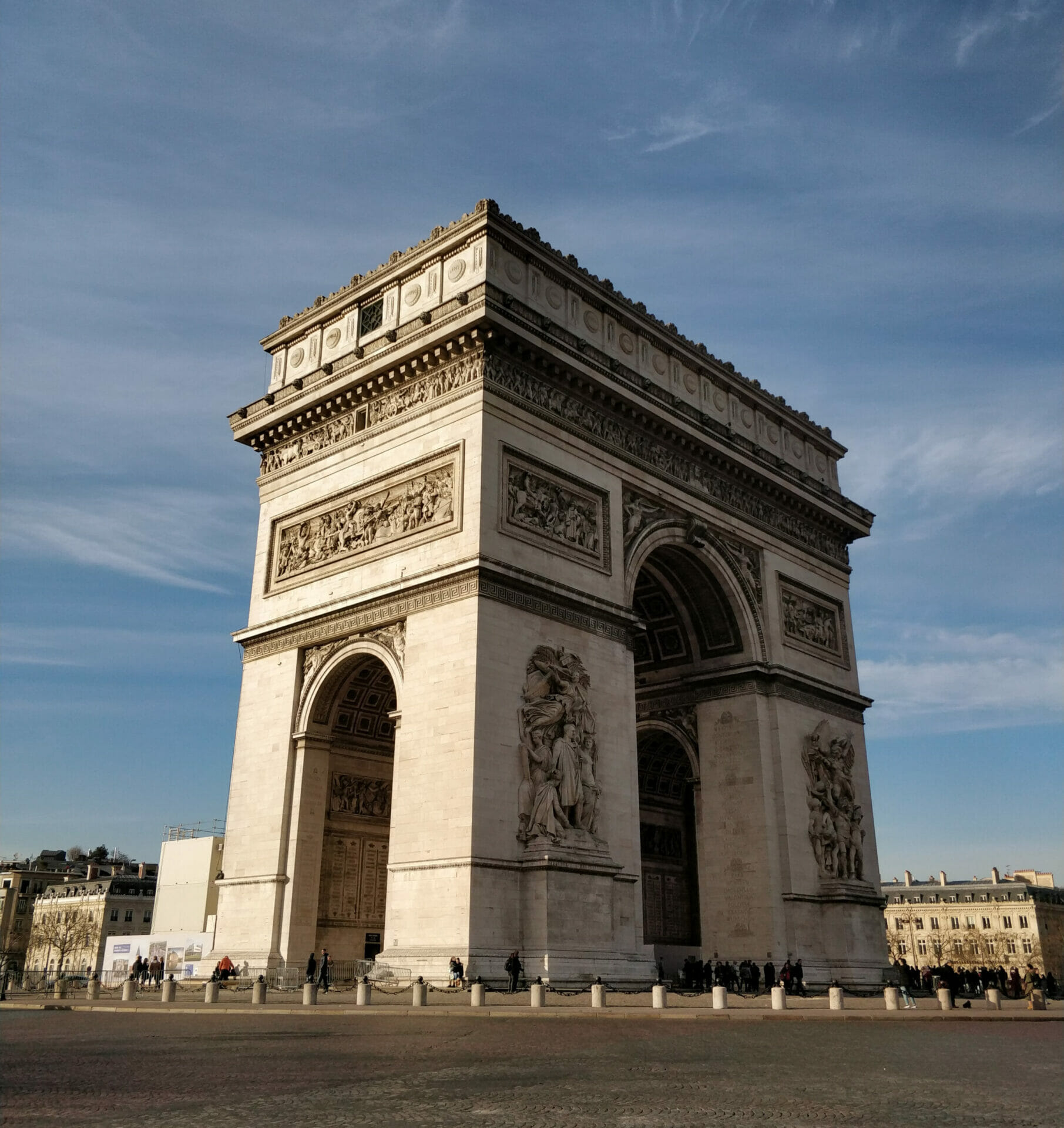
Site-specific art
Jeanne Claude and Christo became well-known in the 1970s for their Valley Curtain, a piece of site-specific art where they hung an enormous orange curtain through Colorado State Highway 325. From their first work to the Arc de Triomphe Wrapped Christo and Jeanne Claude remained tied to their ethics. That is, through the selling of preparatory drawings or collages, the two artists financed their projects entirely. Unlike most public art, Christo and Jeanne Claude made sure that there were no private companies or public institutions interfering with their projects.
Indeed, most public art, especially in its rise in the 1980s, was sponsored by public institutions. In the United States, the United States General Services Administration Art-in-Architecture program decided to finance most of its country’s public art projects in the 1980s. An instance of this was Richard Serra’s controversial Tilted Arc. However, because this panel was highly dependent on public opinion, artworks such as Serra’s were removed due to public complaints. Christo and Jeanne Claude’s financial independence removed this risk. Moreover, their installation works are completely ephemeral, lasting usually less than a month.
Extraordinariness of the ordinary
What is the point of their interventions then? To show the extraordinariness of the ordinary. That is, Jeanne Claude and Christo’s wrapping acts as stage curtains. While hiding what lies beneath them, they automatically give it a value that takes it away from the ordinariness of everyday life.
Monuments are oftentimes overlooked by citizens who may even forget why they were built in the first place. Wrapping a monument means making it stand out, giving it a surreal life. The Arc de Triomphe Wrapped, in its shiny outlook, seems an alive creature as its plastic wrapping moves with the wind. An alien spaceship at the heart of Paris or a giant Christmas present, this artwork gives way to imagination.
Concealing the Arc de Triomphe however, can suggest also a political statement. By hiding physical evidence of Napoleonian victory Christo and Jeanne Claude seem to subtly critique France’s imperialistic grandeur. However, one cannot hide this arch but just cover it. This suggests that the same happens with colonial history.
Lastly, the Arc de Triomphe Wrapped surprises pedestrians and makes an extraordinary and otherwise ordinary corner of the city, leaving space for its interpretation.
Tag




